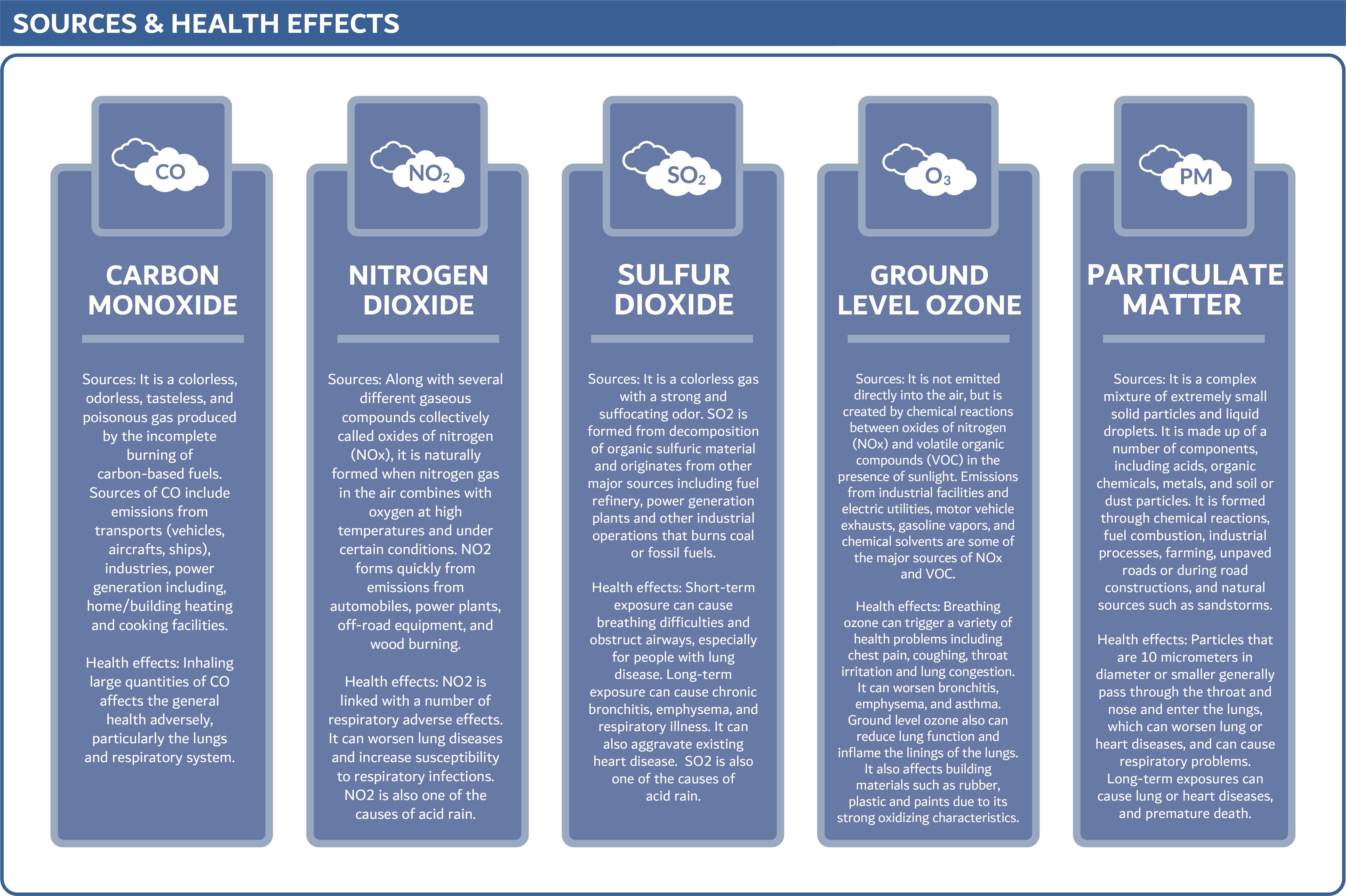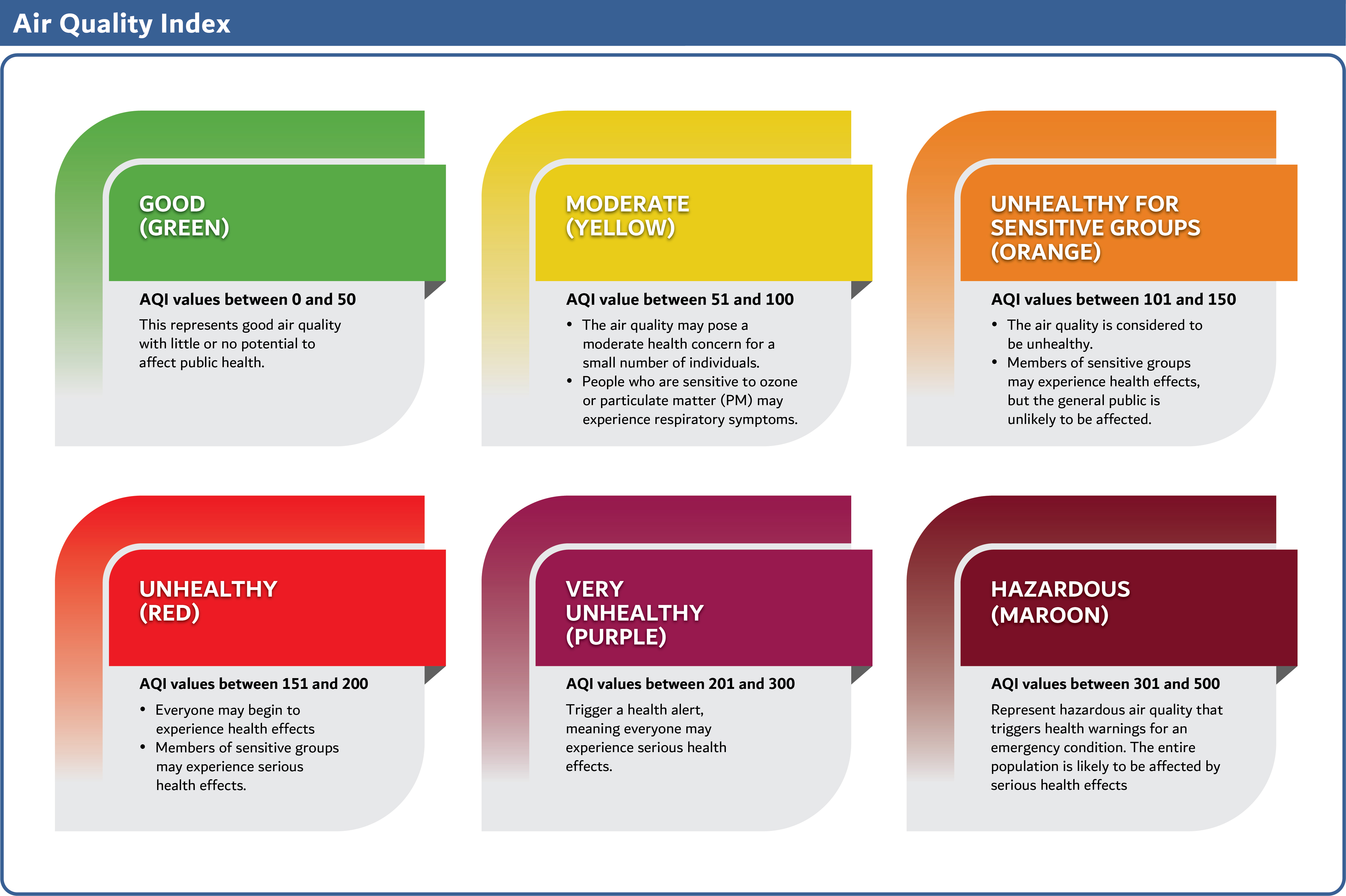CRITERIA POLLUTANTS
The continuous air quality monitoring network in the Emirate of Dubai measures the concentrations of main criteria air pollutants, i.e. carbon monoxide, nitrogen dioxide, sulfur dioxide, ozone and particulate matter, to ensure the ambient concentrations comply with the Federal Law No. (24) of 1999 for the Protection and Development of the Environment implemented by the Cabinet Decree No. (12) of 2006 for the Regulation Concerning Protection of Air from Pollution. In light of the rapid population growth and growth of economic, industrial, commercial and other sectors in the Dubai Emirate, air pollution remains to be one of the main environmental challenges, and consequently a priority for Dubai Municipality due to the serious human health repercussions, especially on sensitive groups, such as children, elderly, population with respiratory difficulties such as asthma, bronchitis or emphysema.
AIR QUALITY INDEX
The Air Quality Index is an internationally accepted approach for presenting daily air quality reports. This index provides valuable information about air quality and the potential health effects associated with air pollution. The index is calculated according to the air quality index equation developed by the US Environmental Protection Agency. The air quality index includes the monitoring data of five criteria pollutants: nitrogen dioxide (NO2), carbon monoxide (CO), sulphur dioxide (SO2), ground ozone (O3), and particulate matter (PM10 and 2.5). The air quality index results are distributed into six colour-coded health impact categories for easy understanding by the public. An AQI value corresponding to 0 – 50 is represented by green colour, which indicates good air quality and concentrations of the pollutants are within the national limits, and presents no or negligible health impacts. On the other end of the spectrum, an AQI value higher than 300 or corresponding to maroon colour denotes hazardous air quality, which may pose serious health effects.

